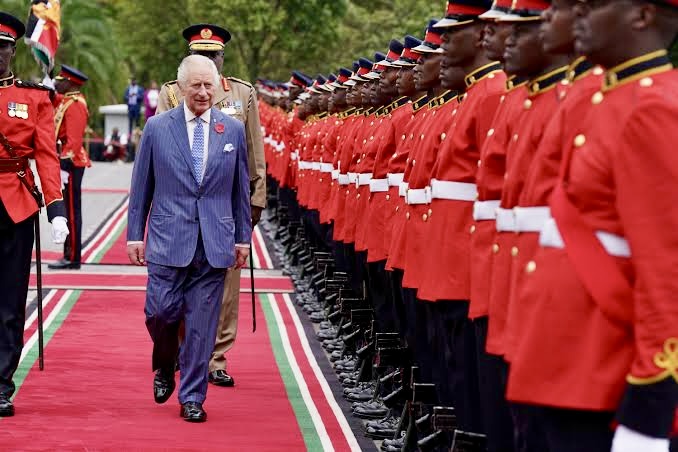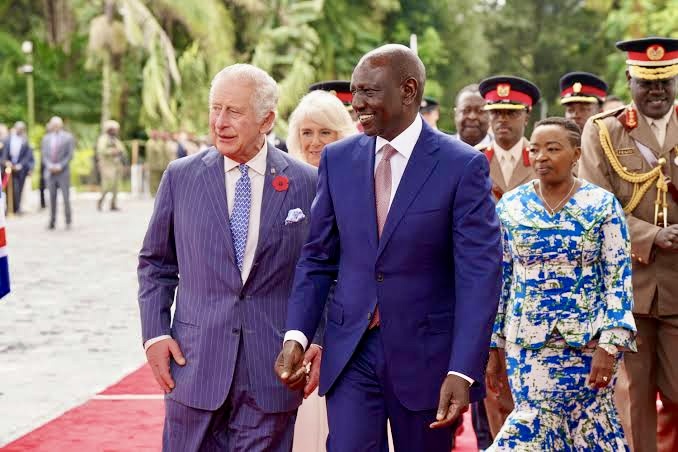
Faith Nyasuguta
In Kenya, Britain’s complicated colonial legacy took center stage as King Charles embarked on a four-day state visit, during which he expressed readiness to acknowledge the “painful aspects” of the two nations’ intertwined history. This visit coincided with increasing demands from local leaders for reparations and a deeper reckoning with the past.
Accompanied by Queen Camilla, King Charles arrived in Nairobi, marking his first visit as monarch to a former colony. Despite the rainy welcome, he was received at the Presidential Palace with a 21-gun salute and a guard of honor.
President William Ruto joined him in planting trees in the palace grounds, symbolizing growth and reconciliation. The royal couple also paid their respects by laying a wreath at the Tomb of the Unknown Warrior in Uhuru Gardens, where Kenya declared its independence in December 1963.
This visit occurred against the backdrop of former colonies seeking greater acknowledgment of the injustices perpetrated during the colonial era. Some of these countries, such as Barbados and Jamaica, have been reevaluating their ties with the British monarchy.
Notably, at last year’s Commonwealth summit, while still the heir to the throne, Charles made a significant statement by recognizing the role of slavery in the organization’s history.
In recent years, citizens of former British colonies, including leaders of Kenya’s Nandi people, have been pressing for further action. They are calling for direct apologies and support for reparations to address the colonial-era abuses, which included torture, killings, and widespread land expropriation, much of which remains under British ownership.
Buckingham Palace conveyed that the visit’s purpose was to “acknowledge the more painful aspects of the UK and Kenya’s shared history, including the Emergency period (1952-1960).” King Charles intended to gain a deeper understanding of the injustices experienced by the Kenyan people during this period.
The period referred to as the “Emergency” was marked by the Mau Mau revolt in central Kenya from 1952 to 1960, during which approximately 90,000 Kenyans lost their lives or suffered severe injuries, and 160,000 were detained, according to estimates by the Kenya Human Rights Commission (KHRC).
In 2013, the UK government expressed regret for these abuses and agreed to a £20 million ($24 million) settlement.
Notably, Nandi King Koitalel Arap Samoei led a decade-long rebellion against British colonial rule until he was assassinated by a British colonel in 1905. Subsequently, the British confiscated a significant portion of his people’s land and cattle.

While acknowledging contributions made by the British to Kenya in areas such as education and public health systems, Samoei’s great-grandson Kipchoge araap Chomu emphasized the importance of addressing historical injustices. He stated, “We have to demand a public apology from the government of the British… After apologies, we also expect reparations.”
In addition to these significant discussions and commemorations, King Charles’s itinerary includes meetings with entrepreneurs from Kenya’s vibrant tech sector, visits to wildlife facilities, and a journey to the southeastern port city of Mombasa.
This visit provides an opportunity for reflection, reconciliation, and dialogue between the United Kingdom and Kenya, as they navigate their shared history and envision their future relationship.
RELATED:




